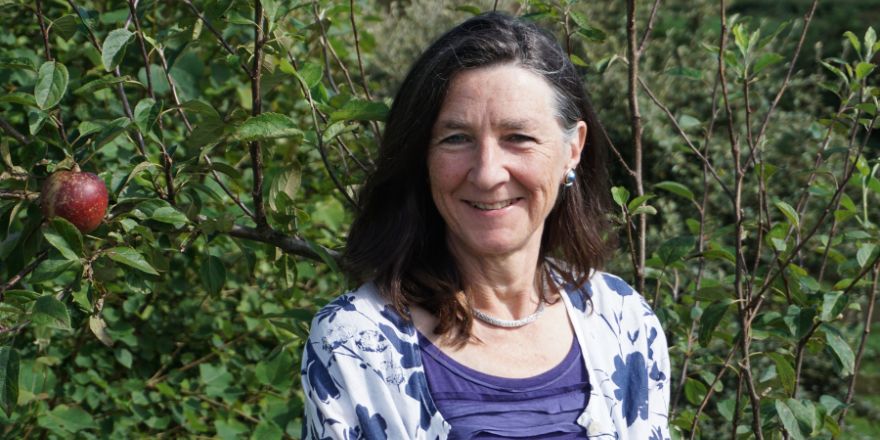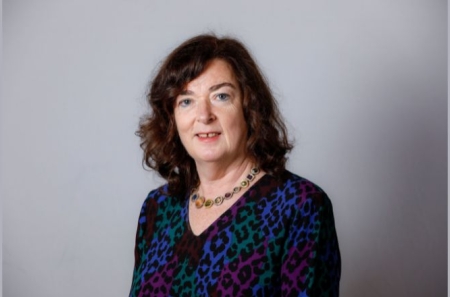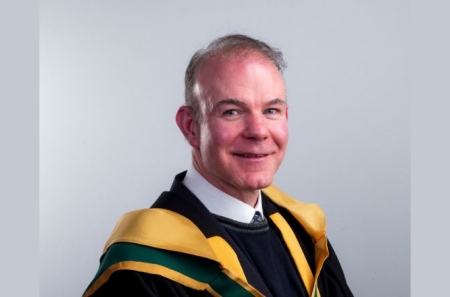
Claudia Kinmonth MRIA: Independent researcher, art and design historian
22 November 2022Dr Kinmonth’s interdisciplinary research, drawing from texts, manuscripts, poetry, oral history, artworks and objects, allied to her experience as a restorer and woodworker, enhances appreciation of how the rural majority of Ireland lived and allows insight into the materials and methods used by past generations.
Claudia Kinmonth MRIA, is an independent researcher, art and design historian, and is currently Research Curator (Domestic Life) at the Ulster Folk Museum in Belfast and a member of the board of the National Museum of Ireland.
My study of Irish art and design began at London’s Royal College of Art, where I graduated in Design History. Six years working as a restorer and woodworker, then training at the London College of Furniture, provided insights into materials and the ways things were made. Having worked at the Victoria and Albert Museum and Sir John Soane’s Museum, I am now regularly involved with museums in Cork, helping with accreditation (Cork Public Museum), categorisation and care of collections (Cork Butter Museum). I am Research Curator (Domestic Life) for the Ulster Folk Museum (Belfast) and currently serve on the board of the National Museum of Ireland.
Museum objects are central to my research, which is interdisciplinary and draws widely from texts, manuscripts, poetry, oral history, artworks and of course objects. Familiarity with collections throughout the island of Ireland allows me to see how little our Irish ancestors needed; they used and repaired what they owned or made themselves. Recycling was habitual; once wooden cartwheels wore out, the spokes saw new life as rungs for ladders, and the curved felloes became rockers for babies’ cradles. Timber washed ashore was salvaged for building homes or making furniture. When I examine the insides of case furniture, I often find the distinctive large bore holes of the marine shipworm, Teredo, which lives only in wood floating at sea.
Studying museum objects and making comparisons led me to research the secretive, largely undocumented craft of the Irish horner. Horners converted cow horn into a smooth, translucent material, to create objects such as drinking horns, powder horns, inkwells and ceremonial goblets. They also crafted sounding horns, buttons, rosary beads and lanterns (‘lamp horns’), which were lightweight, inexpensive, transparent and unbreakable. Horn spoons, and exactly how they were made—by simmering, moulding and rendering them sufficiently smooth to use for eating—became my focus. Some were made to imitate fashionably shaped silver, at less expense. About 120 horn spoons survive in Irish museums; one excavated in Dublin dates to back to Viking times.
My MA thesis, which involved extensive fieldwork, became my first book: Irish country furniture 1700–1950 (Yale University Press, 1993). My second book, Irish rural interiors in art (Yale University Press, 2006), instigated exhibitions in Cork, Dublin and Boston College. The latter’s MacMullen Museum of Art exhibited a full range of country furniture, alongside artworks showing things in context; genre painting, like vernacular furniture, was previously neglected. This research enhances appreciation of how the rural majority of Ireland lived, until the late twentieth century.
Women, who baked bread over the open fire, often bought flour in bulk. Saving the flour bags and scrubbing off the print produced textiles for curtains, bedclothes, aprons, babies’ nappies and dresses. People living in thatched homes assiduously lined their kitchen ceilings with flour bags, which, after whitewashing, created cleaner, brighter workspaces for lace making, sewing or making butter.
Chairs were made with legs that could be easily renewed once they became worn, or had seats that could be rewoven using home-made straw rope. Dressers had feet that could be replaced if they became rotten from a damp floor, and paint was imaginatively used to bring a new lease of life to kitchen furniture. A tiny, open-topped barrel known as a noggin, made entirely from wood, without metal or glue, was popularly used for eating or drinking out of. Each noggin held a pint or two. The ‘noggin weaver’ was a highly skilled specialist. Like those of the horner, the secrets of the noggin weaver’s craft were guarded; X-ray technology has allowed the noggin’s impressive hidden construction to be revealed. A table that folded up against the wall, with one hinged leg, saved space and material. A bed that folded down from a cupboard was discrete by day. Such designs retain relevance for today’s apartment dwellers. These attitudes of self-help, resourcefulness, frugality, re-use and recycling, are already inspiring to contemporary makers and woodworkers as we shift our attitudes towards a more sustainable future.
My recent book expands on my first, incorporating smaller objects and specific crafts: Irish country furniture and furnishings 1700–2000 (Cork University Press, 2020) won the Michael J. Durkan prize in 2020. Although my research delves deeply into subjects that can become academic papers, I also enjoy the contrast of presenting what I discover to general audiences, discussing things with schoolchildren, or talking on radio or television. Much of my work is accessible at: www.claudiakinmonth.ie.



